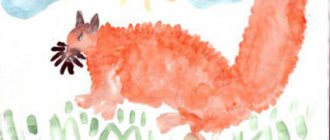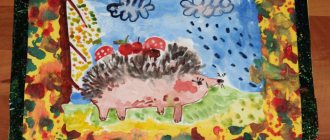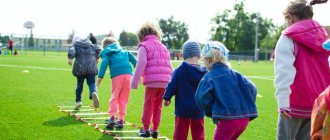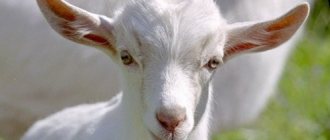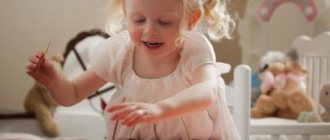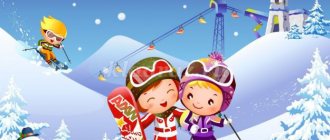How to make appliques from paper Wild animals. Print our free templates, color them however you like, cut them out and glue them together!
The proposed applications - a symbiosis of coloring books and cut-outs - will be useful for the development of the child. They will help improve coloring, cutting, designing , develop fine motor skills, precision of movements, spatial thinking, attentiveness, and perseverance.
See also:
- colored paper applications,
- learning to cut with scissors - the simplest templates.
Print applique templates Animals
Applique Grizzly Bear
Grizzly Bear Facts
- Although grizzly bears are not endangered, an existential threat exists. 1,000 grizzly bears left in the wild .
- Grizzly bears are a North American subspecies of brown bear.
- Grizzly bears are often seen at some of Alaska's best fishing spots, where they feast to accumulate enough body fat to survive the winter.
- During the winter, grizzly bears hibernate. They dig holes on the hillside. Females give birth at this time.
- Grizzly bears are powerful predators, although they eat a wide variety of foods. Nuts, seeds, berries, fish, rodents and moose!
Explanation of the application execution procedure
In order for children to complete their work successfully and enjoy the activity, the teacher needs to clearly and clearly explain the procedure. It will depend on the choice of techniques, materials, and whether preschoolers work together or individually.
Almost all instructions are accompanied by a demonstration of intermediate stages of work, but for some types of application this is not possible, for example, recently glued cereal will fall off the sheet if it is placed in a vertical position. Children need to be introduced to such techniques in advance, in their free time, and then verbal instructions will be sufficient during the lesson.
Item trim applique
The most common method is subject application. It helps to develop skills in using scissors and paper, and gives the teacher the opportunity to see which of the children successfully cope with program tasks and which need individual help. Algorithm for making paper trim applique:
- Each child completes the applique on a separate sheet.
- We prepare parts depending on the selected animal.
- We lay out the details on the background so that the image is in the center; you can use the sample.
- We glue it in this order: body, head, paws, tail, small details (ears, eyes, mouth). You can draw faces with felt-tip pens or pencils. Smooth it out with a napkin.
- If desired, decorate the background with snow, grass, flowers, etc.
Photo gallery: finished works using the cut applique technique
The children complemented the squirrel figurine with a design of a pine branch and a foil nut.
The image of a cat consists of ovals and circles that the preschooler needs to cut out from squares. The “Elephant” applique uses many additional decorative details, so it is better to divide it into two classes or between two children
A child of the sixth year of life can make this figurine of a fox independently.
Making a collective silhouette applique
All children in the group participate in the collective application. If the group is large, it is divided into two subgroups. The work is performed in the following order:
- We attach the stencil or template to a sheet of paper. If the paper is not double-sided colored, choose the white side.
- We outline the image of the animal.
- Cut along the contour.
- We turn it over, glue it or add details.
- Turn it over again and apply glue along the edge of the silhouette.
- We choose a place for the figure on a common sheet, glue it, smooth it with a napkin.
Usually, in group work, children in the older group already agree themselves who will place their parts of the image and where. For those who can do it faster, the teacher offers to decorate the background by gluing small decorative elements (large ones are glued in advance, before class).
Photo gallery: examples of collective works using the silhouette appliqué technique
An applique on the theme “Farm” can also be made using the collage technique, using clippings from magazines or printed images of characters
The panel “Sheep in the Meadow” combines silhouette and mosaic appliqué techniques
The cheerful penguins in this applique are made according to a template and complemented with trimmed details. Collective works depicting animals from hot countries also look great, because their silhouettes are easily recognizable and varied
Performing mosaic applications in pairs or subgroups
Children receive sheets with ready-made animal outlines. The materials for the mosaic are scraps of paper, balls from napkins (pupils roll them up in advance in their free time), cereals, padding polyester or cotton wool, poplar fluff, and plant seeds. The work flow is as follows:
- The image is coated with glue in small areas, starting from the top.
- They glue the materials, guided by the ready-made sample and the teacher’s advice.
- Allow the appliqué to dry and then remove excess materials, carefully shaking them onto a scrap plate.
- Finish drawing or gluing on details.
Mosaic application is the most labor-intensive, requiring perseverance, painstakingness and patience, so for it you need to choose the simplest images with large parts.
Photo gallery: finished works and templates for mosaic application
This bunny made of cotton wool and cotton balls was made collectively
Mosaic applique “Fox” can be done by one or two older children
A giraffe made from cereals will look very positive and colorful. When looking for templates for applique on the Internet, you should pay attention to the numerous coloring books for kids
With such positive animal templates, the application will turn into a fun game.
When making cereal appliqué using this template, it is better to finish the tail and horns or use threads or ribbon
Application from ready-made elements
This type of application is the simplest; image preparation is minimal. It requires cotton pads, leaves, geometric shapes. Children may only need to cut and bend the finished pieces in half. The main thing that is needed is the ability to compose and design a beautiful composition. Planar design skills are already required here. Students love this technique because almost everyone can do it, and the finished work has a very attractive, impressive appearance.
An application made from ready-made forms can become an illustration for your favorite fairy tale or cartoon
In an appliqué made from ready-made parts, even one child can depict several figures, part of a landscape, an animal’s home, or illustrate an episode of a favorite fairy tale. This type of application is also suitable for working together. How to perform this application:
- We think about what we will place and where, which parts will be useful intact, and which need to be cut and bent.
- We bend and cut, if necessary, some elements.
- We lay out the parts of the application on the background, forming a completely finished composition.
- We take each part in turn, spread glue along the edge and put it in the same place where it was. Gently smooth it through a napkin (dry leaves and twigs do not need to be smoothed, children pay attention to this).
- We decorate with small elements.
Photo gallery: samples of applications from ready-made forms
An applique can consist of only circles, but at the same time it can be difficult to complete, requiring attention and the ability to select colors. To convey the image of a puppy, children need to think about how to position the tail and ears, because the hero’s emotions depend on this
The lamb in the meadow was made from cotton pads and cotton swabs, complementing the composition with ready-made flowers on an adhesive base. An original cat made from cotton pads will decorate a corner of nature. Children can make such hares in pairs
The figurine of an elephant will require diligence from preschoolers in conveying the shape of the legs and trunk. Ready-made shapes combined with silhouette cutting produced a wonderful picture of a summer farm. By gluing the “needles” of this hedgehog, children coordinate their actions so that the animal looks elegant and neat
Paper applique Raccoon
Raccoon Facts:
- Raccoons will eat anything. Insects, mice, fish, eggs and even garbage!
- Because they eat almost anything, you can find raccoons in any environment - from the farm to the city!
- Raccoons love to live in hollows, logs, and even attics! Young raccoons often spend the first two months of their lives high in tree holes until their mother drops them to the ground.
- Raccoons typically live 2-3 years in the wild.
- Northern raccoons hibernate - they binge on food to store fat and then sleep in their den all winter.
Applications with wild animals
Pets are well known even to children, because they live “side by side” with humans. But wild animals “hide” from the curious glances of children in the thicket of the forest or in the enclosures of the Zoo. We are unlikely to be able to “spy” on the life of wild animals in the forest, but we can visit the Zoo right now!
In today's lesson, we invite you to use your imagination a little and go with us on an excursion to the Zoo to admire the wild animals. In order to go on an exciting journey, you need to prepare some materials, as well as special tools:
- Scissors
- Paper sheets
- Glue
- A little millet
- Markers
- Paintings depicting a bear, a hare
- cotton wool
- Napkins
Bear applique
There are many different wild animals in the Zoo, but the first one we will pay attention to is the bear. After all, it is the bear in our area that is considered the real owner of the forest!
Step-by-step instruction:
First, give the children pictures of a bear. Then explain to the children that they must carefully coat the figure with glue without going beyond the outline. After this, you will need to sprinkle millet on top of the glue, and then put the work aside until it dries completely.
Chanterelle – applique
The second inhabitant of the Zoo is the fox, considered the most cunning wild animal. Her bright fur coat is unlikely to leave kids indifferent; they will definitely want to make a craft with the beautiful fox!
The fox is formed from geometric shapes. Triangles are used for the head and ears, and ovals are used for the tail, paws, and body. You can simply draw eyes and a nose with a black felt-tip pen.
Bunny made from napkins
Wild animals living in our forests are not only formidable predators, but also quite peaceful herbivores. Therefore, while walking around the Zoo, we will admire not only the bear and fox, but also look into the bunny’s enclosure. Scheme of work:
- Take white napkins, tear them into small pieces, and then roll them into balls.
- Using templates, draw bunnies:
- Gradually attach the finished lumps to the ears and body:
- Decorate the middle of the ears, tail, and muzzle of the hare with cotton wool.
- Form a mustache from the dark stripes:
Lion clipping
Facts about lions:
- Lions live in groups called "prides".
- Male lions boast a mane, a large fringe that encircles their heads.
- Males defend the pride territory, which they clearly mark with the smell of their urine.
- Lionesses are hunters in a pride. They often work together to hunt antelope, zebra, wildebeest, zebra, etc.
- Most lions on earth live in Africa, although a very small population can be found in India's Gir Forest.
Wombat paper applique
Wombat Facts:
- Wombats are marsupials, meaning they have pouches on their bellies in which they raise their babies.
- A baby wombat lives in its mother's pouch for about five months before it emerges.
- Wombats use their claws to dig burrows in eucalyptus forests and grasslands.
- Wombats are nocturnal and they are vegetarians (herbivores). They come out at night to eat grass, bark and roots.
- A wombat that burrows in fields can be a destroyer of ranches and crop-dependent farms.
Applications with sea animals
We have already talked about which animals of hot countries most appeal to children. Now let's talk a little about the mysterious sea inhabitants!
Photo MK
Dolphins are considered the most popular marine inhabitants. They attract people with their kindness and responsiveness. And it is their figures that we suggest you use for applique on a marine theme: Using stencils, dolphins can be formed from colored sheets, napkins or cereals:
Video tutorial applique dolphin from plasticine
Craft Panda
Panda facts:
- Pandas are an endangered species.
- They eat about 28 pounds of bamboo a day!
- Adult pandas weigh about 300 pounds (136 kg).
- Wild pandas live only in remote mountainous areas of China.
- Pandas are solitary animals.
Anteater applique
Anteater Facts:
- They are edentulous animals, meaning they have no teeth at all.
- Anteaters use their long tongues to swallow 35,000 ants and termites every day!
- They find food by smell.
- Anteaters live in tropical forests and grasslands of Central and South America.
- They live for about 14 years and are classified as endangered.
Applications with pets
Before starting MK, it is necessary to talk with preschool children about what animals live in their home and are considered pets. Kids attending the younger group will most likely remember only their pets, but children studying in the older group will tell you that in addition to cats, dogs and rabbits, domestic animals also include cows, goats, sheep and horses.
Having collectively remembered all the inhabitants of houses and garden plots, you can begin to create step-by-step figures:
Kitten applique
Kids can create a kitten figurine using printed drawings:
The blanks from the second picture will need to be carefully cut out. They are quite large, so it will be easy for kids to attach them to the base.
Children studying in the middle group can make a kitten from geometric shapes. To form a figure, teachers will have to print out the necessary parts on a printer: Preschoolers will have to first cut them and then put them together, as shown in the photo:
Puppy applique
Making a puppy is as easy as making a kitten. First you need to prepare the blanks.
So, for example, eyes, a body, and a front leg will be formed from ovals. We will make the head from a whole circle, and the back leg and ears from halves.
Cow applique
Children studying in the preparatory group can use a special template to create an applique with cows grazing in a meadow: Beginning craftsmen 3-4 years old will find it difficult to cope with such a task as cutting out small details. But preschoolers aged 6-7 years will certainly enjoy this activity!
The finished blanks need to be glued to a suitable background. To visually make the picture more voluminous, the background can be made from colored paper in dark green, light green, or grassy green.
Craft Warthog
Facts about warthogs:
- The "spikes" and bumps on a warthog's face... those are warts!
- They are from the same family as the cute domestic pigs, although they look different.
- They have 4 tusks (although our template only shows two).
- They eat grass and plants and dig up roots and bulbs.
- They live for about 15 years.
- Warthogs can go for long periods without drinking water.
Baboon cutout
Facts about baboons:
- There are 5 different species of baboons and they all live in Africa or Arabia.
- Baboons are one of the largest monkeys in the world. Males weigh on average from 15-37 kg.
- Baboons prefer savanna and other semi-arid habitats.
- They don't have prehensile tails like other monkeys, but they can climb trees to sleep, eat, or wait out trouble.
- Baboons eat fruits, herbs, seeds, bark, roots, meat and love to eat farm crops.
- They are known to form large orders of baboons, ranging from tens to hundreds with a complex hierarchical system.
- They can live about 30 years.
Lesson notes on the application “Zoo”
In the notes it is always d.b. etc. sod., not the goal. The words Educator are usually not written. And immediately there is direct speech - an address to the children, and in parentheses - the expected answers of the children.
Lesson notes on the application “Zoo”.
Purpose: Program content
— 1. Learn to display the characteristic features of animal images in an application. 2.Develop constructive abilities in drawing up a portrait (silhouette) of an animal from its parts. Strengthen the ability to cut out shapes from paper. Continue learning to cut out shapes along the contour. 3. Strengthen skills in working with scissors, glue, and a brush. 4. Develop accuracy, perseverance, and patience in children. To form an aesthetic attitude towards the work performed.
Material and equipment
Progress of the lesson.
Part 1 – introductory.
Educator: - Guys, Alf took a book from the book corner, and in it were riddles about animals. Alf can't solve a single riddle. Let's help Alpha? The children agree to help Alf.
Educator: -Alf, what riddles did you like, read them, and the guys will help you solve them.
Alf asks the children riddles:
It’s easy for us to recognize him, It’s easy to recognize him: He’s tall and sees far. (Giraffe)
In the zoo, Believe it or not, Lives a Wonder Beast. His hand is in his forehead. It looks so much like a pipe! (Elephant)
Children solve riddles.
Educator: - Alf, you see how easily and simply the guys can solve riddles.
Alf: Guys, where do elephants and giraffes live? Children's answers.
Alf: And on my planet, where I came from to visit you, there are no elephants or giraffes.
Educator: Guys, let's give Alpha a gift. We will make appliques of an elephant and a giraffe and give them to Alpha. The children agree.
Alf: I'm so glad, thank you guys.
Part 2 – the main one.
Educator: - Guys, what are we planning to do? Answer - (application of an elephant and a giraffe0. - What materials do we need for this? Answer - (colored paper). - What tools do we need? Answer - (glue, brush, scissors). - And how will we make an elephant, the sequence of actions I I’ll show you now (technical demonstration by the teacher).
Educator: -Guys, prepare your workplace. For those children who want to make an elephant for Alpha, take strips of gray paper, and for those children who want to make a giraffe, take strips of orange paper. (you can ask the children themselves about this)
Children independently cut out parts from strips of paper to applique the selected animal. Place the silhouette of an animal from the parts on the backing, spread and glue the parts. The teacher helps children only if the children have difficulties.
Part 3 is the final one.
Alf examines the children's work and thanks the children.
Alf: Guys, where can you see a giraffe and an elephant? Children's answers.
Alf: It’s good that I now know that you can go to the zoo and see animals that live not only in Russia, but also in other countries.
Educator: -Alf, sit on the chair, and I will read you a poem about the zoo, and the guys will show you a finger game.
Finger game "Zoo".
We are going to the zoo Material from the site www.logoped.ru
(index and middle fingers walk on the table)
,
Everyone is happy to be there (claps hands and knocks fists)
There are ponies, zebras, crocodiles, parrots and gorillas, there are giraffes and elephants, monkeys, tigers, lions. (bend fingers)
And in our hands we have a gun (show the gun with your hands),
It takes photographs
(pretend to be a camera),
Let’s take a photo for everyone (show with hands),
This is how you want to hunt
(clench and unclench your fingers).
game "Zoo". Educator: Guys, now try to portray the animals that live in the zoo.
Coordination of speech with movement: “Animals”
This is a lion. He is the king of beasts, there is no one stronger in the world. (we walk in a circle leisurely, raising our heads)
And funny monkeys shook all the vines. (spring, standing in a circle, feet shoulder-width apart)
But the smart, kind elephant sends his bow to everyone. (palms pressed to the head, body tilted forward - to the right, forward - to the left)
The leopard jumps so deftly, like our favorite ball. (jumping in place)
The pony runs, frolics, wants to make friends with us. (running in a circle with jumps)
The zebra shakes his head and invites him to visit. (hands on the belt, head tilted left and right)
Craft Leopard
Leopard Facts:
- Leopards are an endangered species.
- They are strong hunters and love to be in trees. In fact, they often drag their prey up trees to eat it!
- They are nocturnal.
- Leopards are very secretive and hunt antelope and deer under the cover of tall grass.
- They are also good swimmers and love to be in the water.
- Leopards are light colored with black spots called rosettes. There are also black leopards, commonly known as black panthers .
Fennec cutout
Fennec Fox Facts:
- The fennec fox is the smallest fox species in the world.
- They have huge bat-like ears that help radiate body heat and keep them cool in the desert.
- They mainly live in North Africa and the Sahara Desert.
- They have long hair, which keeps them warm on cold nights and protects them from the hot sun.
- They live in underground dens in small communities of about ten foxes.
- Fennec foxes are omnivores and eat both plants and small rodents, eggs, reptiles and insects.
- They can go without water for a long time.
Howler monkey paper applique
Howler Monkey Facts:
- Howler monkeys live in tropical areas of Central and South America.
- They howl so loudly that they can be heard up to 5 km away.
- They have what is called a "prehensile" tail, which means they can use it as an extra hand to grasp branches.
- Howler monkeys can live 15-20 years in the wild.
Skills and abilities of children of the senior group in application
What have children of the sixth year of life mastered in the field of appliqué? First, they know how to handle scissors safely. The health of the students is the priority of the kindergarten, and each teacher gives his students clear instructions on how to use scissors so as not to harm themselves and their friends.
In addition, children in the older group can:
- cut the paper into “straws” and wide strips of different lengths;
- tear the cut strips into pieces and place them on plates for later use;
- cut circles from squares and ovals from rectangles using smooth rounding of corners;
- cut geometric shapes, getting smaller or new ones (small rectangles from a large one, triangles from a square); cut out objects or parts of them from paper folded in half and accordion-style:
- use glue carefully and sparingly, remove excess glue with a napkin;
- coat part of the application with glue and fill this area with scraps of paper, cereal, cotton wool and other materials;
- combine in one work several types of materials, various techniques and methods of making parts (quilling, designing, modeling, drawing).
One or several children can work on the image of an animal, depending on the complexity. If a collage is planned, children can prepare animal figures in advance during independent visual arts activities, and during the lesson they can only cut and paste them.
Children in the older group know how to work without interfering with each other. consulting and interacting
Gorilla cutout
Gorilla Facts:
- Gorillas are classified as endangered.
- There are only 700 mountain gorillas left on Earth.
- Although their numbers are slowly increasing due to conservation efforts, habitat loss and poaching still pose a major threat to these animals.
- Baby gorillas love to ride on their mother's back.
- Gorillas are herbivores and primarily eat bamboo and other leafy plants.
- Gorillas can live 40-50 years.
- They are very smart!
Most commonly used materials and equipment
In order to convey the image of the animal as clearly and completely as possible, the teacher offers children both traditional and little-used materials for appliqué. Traditional ones include ordinary colored paper and thin cardboard, plain and printed, clippings from worn-out children's magazines and books. However, a variety of materials that were not originally intended for application in kindergartens are becoming increasingly widespread:
- Fabric, cotton wool, cotton pads, threads, braid, ribbons, sequins, sparkles, beads.
- Buckwheat, rice, semolina, millet.
- Gifts of the plant world (leaves, twigs, dried flowers, pine needles, moss, straw). They can be used to lay out animal figures, or fill and decorate the background.
- Waste material, for example, candy wrappers, scraps of beautiful wrapping paper, shavings that form when sharpening pencils.
A hedgehog made from pencil filings looks almost real
When using small materials, the teacher must draw children's attention to the fact that these objects can be dangerous and must also be handled with care.
For the background use white and colored paper, large pieces of wallpaper with a discreet pattern, and fabric. Interesting and beautiful applications are made on burlap and unbleached fabric. You can decorate the background by washing watercolors, stamps, spraying, or applying a design with a roller.
In addition to scissors with rounded ends, glue, napkins, and a pencil, the following equipment may be useful for tracing an outline:
- small plates where children will put scraps and pour out excess cereal;
- used fountain pen refills (for creating curls using the quilling technique);
- templates and stencils depicting animal body parts or their silhouettes;
- felt-tip pens, wax crayons for finishing details.
Application with quilling elements looks very gentle and airy
From the beginning of the year, students should be taught to keep their workspace in order and not to scatter materials, because there will be quite a lot of them on the table. This is best done by personal example: the teacher performs the appliqué next to the children and first tells them where to put the tools and materials, and then during the lesson reminds them how best to organize the workplace.
Proper organization of the workplace is the key to children’s safety
